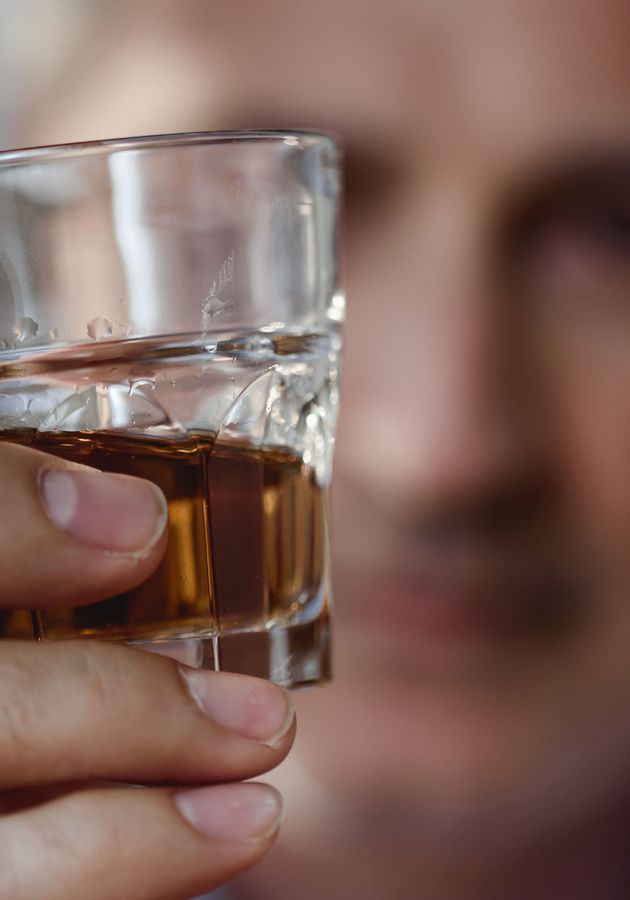In ‘’The Urge,’’ Carl Erik Fisher follows two stories - first and foremost is the story about the methods of addiction treatment and recovery through the ages. The second one is the story of Fisher as an addiction medicine specialist and person in addiction recovery. These perspectives - professional, historical, and personal - make this piece a unique and the most extensive look at the centuries-old and persisting phenomenon of addiction. So, get ready to understand it better!
Approaching addiction from multiple perspectives
When he was 29 years old, Fisher ended up in Bellevue city hospital, where patients with the most challenging, chronic mental illnesses are treated. Once he arrived, Fisher realized he knew some of the faculty in the hospital already because he had applied there for residency earlier. It turned out that in a short period, Fisher went from being a newly minted physician in a psychiatry residency program at Columbia University to a psychiatric patient who shared the ward with patients with substance use problems and other mental disorders. Naturally, he had trouble processing this shift and the fact he had a manic episode induced by weeks of stimulants and alcohol. Once he accepted he belonged there, other questions began lingering - ‘’How did I get here, and what exactly had gone wrong with me? How will I get better? Can I really never drink again?’’
Although Fisher, fortunately, successfully went through rehab and returned to the residency program, those questions, along with numerous others, continued to obsess him. In search of answers, he decided to become an addiction medicine specialist and study the psychology and neuroscience of addiction. As he immersed himself in the field, he quickly realized that addiction ‘’was not just an issue of medical science but also one of identity, power, commerce, and fear—as well as one of devotion.’’ In other words, we can understand addiction better only if we combine insights from various fields ranging from medicine, ancient philosophy, sociology, history, and even theology. Fisher says looking at addiction from different angles made him conclude that we should not try to look for ways to eradicate it. Our primary goal shouldn’t be finding the cure but accepting that addiction has been and will be a part of human life. That way, we can free ourselves to look at the ‘’full variety of interventions available to help.’’ ‘’If we want to break the cycle,’’ he writes, ‘’we must take the best of each of these approaches—medical, social, spiritual, and so forth—and apply their lessons in a truly holistic balance, while always being sure to let the history spark humility and openness to multiple perspectives.’’
Addiction is mysterious, confounding, but ultimately human
One of Fisher’s patients, Susan, has gone through various treatment programs to stop drinking - from old-school abstinence-based to modern and flexible ones. Although she did have periods when she did not drink, she never managed to stop completely, despite the terrible consequences of her addiction, such as blackouts or losing a corporate job. ‘’I know what I need to do,’’ she says. ‘’I want to do it. But I don’t do what I want to do. And then I’m drinking again, and I just don’t know why or how.” We can say that the frightening struggle Susan faced is almost as old as time. Ancient Greeks, for instance, had the word philopotês which meant a “lover of drinking sessions.” The Chinese poet of the Song dynasty, Teng Cen (AD 1137–1224), wrote that, despite the pact he made with gods to stop drinking, he occasionally succumbed to cravings during a banquet.
Since humanity has been struggling with addiction for a long time, there have also been numerous attempts over the course of history to try to explain it. Some thought of it as a ‘’dichotomy of free choice versus total compulsion.’’ This view brought numerous punitive measures over centuries, from putting drunkards in stocks to imprisoning people for drug possession. The opposite view, popular nowadays, sees addictive behaviors as involuntary and uncontrollable compulsions. The truth, however, is likely somewhere in between, as many people with addiction see their behavior both as a consequence of free choice and a total loss of control. ‘’The thing that is terrifying to Susan,’’ writes Fisher, ‘’and to many others like her, is that they watch themselves making a choice even while feeling there is something wrong with the choosing. It is, in other words, an issue of disordered choice: a problem with choice, choice gone awry.’’ According to Fisher, we should not try to go further in analyzing this paradox - addiction can be connected with willingness and agency, as well as our seeming inability to control ourselves. It is something complex, ‘’mysterious, confounding, but ultimately human.’’
Drug epidemics
Throughout history, there have been waves of dramatically increased use of some drugs in certain societies, which were widely described and understood as drug epidemics. Such an epidemic struck the Mohegan people, Native Americans located in what is now Connecticut, who succumbed to the power of alcohol in the 18th century. As Fisher describes it, ‘’Alcohol seemed to be eating away at their souls.’’ Trackers, insensible to winter, froze to death, drunken men beat their wives, and treaty negotiations ended up in violence - those are only some of the pictures that illustrate the state of the Mohegan community at the time.
Drug epidemics were usually followed by drug scares - forms of moral panic usually initiated by elite forces to impose a social order in societies undergoing dramatic change. For instance, the Mughal emperor Jahangir forbade all smoking. Russian, Japanese, and Chinese rulers introduced harsh penalties for tobacco use. Sultan Murad IV of the Ottoman Empire occasionally punished tobacco users in the 1620s and ’30s with death. However, despite the fines, people continued using the drugs. There is even an account of Ottoman soldiers smuggling pipes in the sleeves to have the last few puffs before their executions.
The drugs alone are not that powerful to start an epidemic - that is when addiction supply industries with drug promotions and governments giving various financial incentives help. Take the U.S. company Parke, Davis & Co, which promoted the use of cocaine for ‘’exhaustion’’ and ‘’overwork.’’ When it comes to the role of authorities in spreading epidemics, Russian emperor Peter the Great can serve as an example. He decided to withdraw harsh penalties for smuggling tobacco by permitting its sale and consumption, and, needless to say, he made money out of them. Many European leaders also gave up on tobacco bans in favor of taxes, monopolies, and other strategies to profit from this crop.
So, there are multiple reasons why drug epidemics strike. In the case of the Mohegan people, colonists were also to blame - they encouraged drinking among Native people to reduce their resistance and make them easy to manipulate. Sometimes, the reason lies in society’s attempts to soothe their pain for being alienated from their culture and traditional spirituality and losing their freedom.
Alcoholics Anonymous
People came up with various ways to get and produce alcoholic beverages during the Prohibition Era in the U.S. One of them was Bill Wilson, who brewed dandelion wine in the bathtub. Then, impatient to wait for it to fully mature, he would drink it raw and then become violently ill. Apart from this, addiction brought numerous other problems to Wilson. On one occasion, his wife Lois found him passed out in the entryway, bleeding heavily from a scalp wound. When his drinking became worse, he was paranoid and suicidal.
Over the years, Wilson went from one doctor to another, but found no relief for his problem. One day in 1934, an old friend told Wilson that he quit drinking thanks to the prominent evangelist organization called Oxford Group, which put emphasis on spiritual practices like small-group discussions and frequent confession. Although a bit skeptical about organized religion, Wilson decided to give this group a chance - after all, he was desperate to stop drinking. However, it soon turned out that Wilson’s road to recovery was to create his own version of the Oxford group - an informal fellowship that later became ‘’the most significant and enduring social movement in the history of addiction, one that has defined our national understanding of substance problems’’ - Alcoholics Anonymous.
One day, on a business trip to Akron, Ohio, Wilson found himself having a strong desire to drink. Then he thought he could stay sober if he connected with another recovering alcoholic. Through his Oxford Group connections, he met a surgeon Bob Smith, and they ended up talking for the next five hours. Eventually, the two of them came up with their own definition of alcoholism as ‘’a hybrid condition, made of physical, mental, and spiritual elements,’’ and a twelve-step program for alcoholics, whose three crucial ideas about alcoholism were inspired by Oxford's Group practices. The first idea was ‘’that a true alcoholic could never again drink safely.’’ The second idea suggested that in recovery from alcoholism, we need something opposite of willpower. In other words, recovery means letting go and trusting in some form of pragmatic spirituality greater than the self. And third, was a full-on identity reconstruction and service to others. As you can see, only the first idea includes alcohol - the crucial steps required a program of complete personal change - ’’a process that would soon come to be known as ‘recovery.’”
Understanding addiction
Is addiction something you catch or a thing that takes hold of you? Is it a separate entity that you attach to your healthier being? Does it exist somewhere in your biology, personality, or karma? Perhaps it exists in all of them at the same time? Would you have it for the rest of your life even if you never drank or used again? Let’s see how research can help us with answering these questions.
Numerous studies examined the idea about the biological roots of addiction. Some investigated whether there was an inborn receptor abnormality that determined addiction - others whether the frequent use of opioids, like heroin, damaged the receptor system, causing a lasting and potentially permanent drive to use drugs. However, none of them managed to find consistent changes in receptors and neurotransmitters that could fully account for even the basic elements of drug use, such as tolerance and dependence. Genetic studies did not find evidence to explain that addiction is an issue of genetics, either. As Fisher emphasizes, ‘’Biology does matter, but it is only one of many factors influencing addiction, along with the environment and even choice. Genetic research is also not strong enough to explain who gets addiction, or why.’’
Recent studies have found that some addictions are related to personality traits we call anxious-depressive. Some are connected with the need to manage other psychological problems, while others are a consequence of individual, intergenerational, or societal trauma. Yet, none of the research responds to the fundamental question of why some people develop addiction, and others don’t. Therefore, the best we can do, according to Fisher, is to accept that addiction is, at the same time, a brain disease, social malady and universal response to suffering - and, sometimes, one or none of those things. Having all this in mind, we can conclude with Fisher’s observation, ‘’I’m still not convinced that I have a specific disease, and I’m not even convinced that I am fundamentally different from the rest of the population—if anything, it seems a matter of degree rather than kind, and addiction is just the place where our universal human vulnerabilities are most clearly on display.’’
Final Notes
By urging us to accept a broad definition of addiction as a part of life, Fisher gives those who are suffering a better chance for recovery. As Beth Macy, author of ‘’Dopesick’’ wrote, ‘’In the midst of an overdose crisis that grows worse by the hour and has vexed America for centuries, Fisher has given us the best prescription of all: understanding.’’ This call for compassion and sympathy for human suffering is, in our opinion, the best quality of this book.
12min Tip
‘’The suffering of addiction is not an individual malady,’’ writes Fisher. ‘’It also comes from deep, ancestral wounds. We need to face that fact too, in order to fully recover, together.’’





























